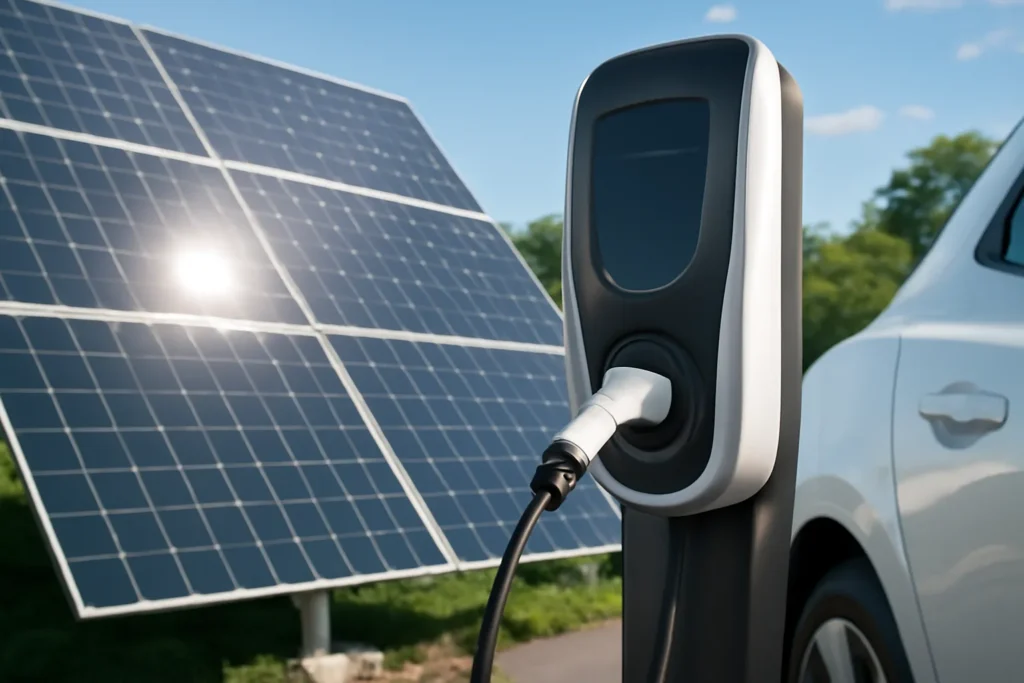The Stakes: Clean Tech Ambition Meets Market Reality
Picture a sprawling business campus on the edge of a European city. Rows of gleaming electric vehicles (EVs) are plugged into a line of new chargers, drawing energy not just from the grid, but directly from the rooftop solar panels shimmering above. This is not a futuristic utopia; it’s the scenario SolarEdge Technologies aims to make commonplace with the launch of its ONE EV Charger, unveiled at Intersolar Europe 2025.
Innovation in clean energy isn’t just a technological race—it’s a survival strategy for businesses grappling with unpredictable energy costs and growing sustainability demands. SolarEdge’s latest EV charging solution targets commercial and industrial fleets, promising up to 70% charging cost savings according to one early adopter. In a world where transportation emissions remain a stubborn driver of climate change, the stakes couldn’t be higher.
The charger’s appeal isn’t just in the kilowatts it delivers, but in harnessing them intelligently. SolarEdge’s software platform weighs real-time solar generation and grid electricity prices, customizing charging schedules to business needs. The system even supports ‘tiered charging modes’—prioritizing employees (like sales fleet drivers) who need a midday charge by allowing them privileged access to grid power, while others are limited to solar as available.
Harvard economist Dr. Lia Taylor notes, “Commercial EV fleets are poised to become the tipping point for solar smart-charging. When cost savings and sustainability goals align, adoption accelerates.” The vision is undeniably ambitious. Yet, how realistic is it, given the storm clouds gathering over the clean tech sector?
Features Designed for the Real World: More Than Hype?
It’s easy to be dazzled by claims of high-tech breakthroughs, but reliability and user-centric design often make or break adoption. The SolarEdge ONE EV Charger comes in both standard and Pro configurations, with bells and whistles like an eSIM card, OLED meter display, and up to 32A, 400V AC support—flexible enough for both indoor and outdoor use, according to the IP54 rating. A 3-year product warranty provides some peace of mind, a notable move given the high upfront costs of smart energy hardware.
One often-overlooked advantage is remote troubleshooting and software updates, a cost-saving measure that echoes Tesla’s approach to vehicle maintenance. SolarEdge’s newest energy optimization platform lets operators manage, configure, and diagnose charging stations remotely, minimizing downtime and expensive site visits—a clear nod to the realities of managing a dispersed EV fleet.
Integration is the new imperative. The charger connects not just with SolarEdge solar systems, but also interfaces with utility infrastructure, smart apps, and even an AI phone support agent named Olivia. Commercial clients, often juggling multiple systems, will find “tiered charging” especially useful—a feature that gives charging priority to employees who need vehicles for business-critical tasks. The ability to set these preferences via mobile app demonstrates how smart charging must fit seamlessly into daily operational rhythms, not demand major workflow changes.
“If we want the transition to clean mobility to stick, the solutions must feel as effortless as they are ethical.”
If effortless adoption is the gold standard, the green tech industry has not always delivered. High-profile failures—from ill-fated battery swaps to clunky charging software—have left businesses wary. But now, urgency is pressing forward: A recent Pew Research study found that nearly two-thirds of midsize companies now cite decarbonization of transport as a board-level priority.
Conservative Headwinds: The Politics of Progress and Profit
No climate solution exists in a political vacuum. While innovative companies like SolarEdge push the boundaries of what’s possible, conservative policymakers around the world, particularly in the U.S. and parts of Europe, have been quick to question or sideline public investment in renewable infrastructure. The result has often been a patchwork of incentives, stunted rollout of charging networks, and a confusing landscape for business buyers.
SolarEdge faces financial hurdles of its own: Revenue declined by 59% year-over-year—an alarming figure—while cash burn continues, despite a buoyant liquidity ratio of 2.04. Yet, the company’s leadership frames these setbacks as a temporary byproduct of industry maturation and post-pandemic adjustments. CEO Shuki Nir argues that “sustainable transport depends not only on EVs but on an integrated, affordable infrastructure.” The gravitas behind this message is hard to ignore—but so too are the market pressures threatening its realization.
A closer look reveals the intersection of policy, innovation, and profit as the crucible for real change. Nations that invested early in green infrastructure, such as Norway and Germany, have seen both emissions reductions and economic resilience. Their success is a rebuke to the laissez-faire, trickle-down approach championed by conservative economic orthodoxy. Without comprehensive vision and support, even the best innovations wither in the marketplace.
The promise of SolarEdge’s solar-powered charger is more than just saving businesses money; it’s about rewriting the narrative of sustainability—from burdensome cost center to value generator. But will lagging public policy, fragmented incentives, and volatile funding hamstring progress? For the green transition to gain real traction, governments must match private sector boldness with coherent support, refuting the fossil-fueled status quo that has long benefited entrenched interests over public good.
Ultimately, the SolarEdge launch is a microcosm of the broader battles playing out in clean energy. Visionary technology, ambitious promises—and a field strewn with political and financial obstacles. If clean tech leaders and progressive policymakers can align, the payoff could be a leap not just for corporate ESG scores, but for our collective ability to take climate action seriously. The outcome isn’t inevitable, but the path forward is clear: innovators need allies, not adversaries, if the solar-powered revolution is to deliver on its promise.

